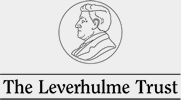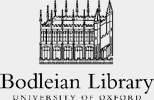The Art of English Poetry (1702 fourth edition, 1710)
Edward Bysshe"s Art of English Poetry, first published in 1702, was the most influential attempt to represent what it believed to be the very best of the English poetic canon. It was frequently reprinted (in 1705, 1708, 1710, 1714, 1718, 1724, 1737, and 1762) and hugely popular.
The work comes in three parts: a discussion on meter and types of poetry, called "Rules for Making Verses"; a rhyming dictionary; and an anthology of the best passages of English poets. Bysshe"s rules for the composition of verse were inflexible and derivative, but his work was far more influential as a commonplace book of memorable poetry. For many readers, the passages that Bysshe provided were of tremendous use. Like a modern dictionary of quotations, they could be utilized for a number of purposes, from providing apt thoughts for occasions, speeches or writings, to introducing works that would otherwise be forbiddingly long and inaccessible. Bysshe presented headings –of subjects, or ideas, – to order the illustrative passages. The extracts notionally contain the most profound of poetic thoughts and feelings, and give a significant impression of poetic taste at the beginning of the eighteenth century.
The epitome of such taste is the heroic poem, particularly the work of the lately deceased John Dryden (especially his Virgil translations), and Bysshe accordingly quotes him more frequently than any other poet. Similarly popular are Alexander Pope (once The Iliad of Homer started appearing in 1715), John Milton, Richard Blackmore"s then popular epics (especially his Prince Arthur), and other poets who were widely read at the time, such as Abraham Cowley. Very few of the extracts are from before 1650, which suggests that, for Bysshe, recent decades contained the greatest flowering of English poetry. Yet, if this seems selective, the success of his work is telling, and shows that Bysshe"s choices were hardly anomalous.
The many collections of Beauties (of poetry, drama, Shakespeare, and of other various forms or writers) that punctuate the eighteenth century owe a lot to Bysshe. Charles Gildon, a miscellaneous writer, saw the appeal of Bysshe"s formula, and copied it, in The Complete Art of Poetry (1718), offering much more Shakespeare and introducing a great deal of Edmund Spenser. Yet Gildon"s brash claims to be improving Bysshe collapse under scrutiny, as two thirds of his extracts are copied directly from Bysshe. The same can be said of the anonymous Thesaurus Dramaticus (1724), almost all of which reprints Bysshe"s dramatic extracts.
It would be some decades before Bysshe"s influence waned: after the mid-century, anthologies that copied his model tended to reproduce more contemporary poets, in place of some of his choices. But by then, his anthology had served its purpose.
The influence of the Art of Poetry on eighteenth-century taste has never been in doubt, though, and to suggest that it was read by almost everyone interested in English literature (from Samuel Richardson and William Hogarth, to William Blake and Lord Byron) is not an exaggeration.
Dr Adam Rounce, Manchester Metropolitan University




